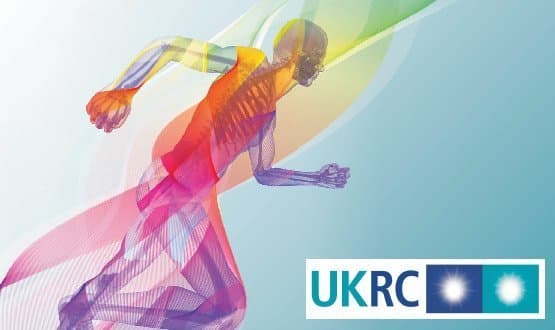Imaging informatics was one of the liveliest streams at this year’s UK Congress of Radiology, with debate ranging from the future of IT systems to the future of radiology itself as those systems change working patterns and jobs.
England’s PACS/RIS refresh
Many trusts in England are going through the process of procuring new picture archiving and communications systems and radiology information systems, as the market refresh triggered by the end of the National PACS Programme gathers pace.
Trusts looking to the end of the national contracts have a range of options ahead of them, from using a framework contract drawn up by NHS Supply Chain to make ‘tactical’ or strategic decisions, to going out to OJEU procurement.
A well-attended session on the refresh included a discussion by Tony Corkett of Cloud21 of the pros and cons of the two main procurement routes and advice from lawyer Andrew Daly for those choosing the OJEU route.
One of their main pieces of advice is that trusts need to start early, whatever they decide to do. Alasdair Thompson of the Health and Social Care Information Centre also advised them to think early about the challenges of data migration.
Thompson said that some 4 petabytes (or 4m gigabytes) of data have already been transferred from local service providers to local data stores run by trusts as part of what may be “the biggest data migration exercise in the world.”
But he warned that some trusts have 80 terabytes of data in their own right: which could take 40 months to transfer.
“The key lesson here is to separate your data migration from your PACS procurement. If you wait until you have selected your PACS provider to start your data migration… you’re not migrating your data when you should be.”
Safety in standards
Patient safety should be at the front of people’s minds when implementing new IT systems such as PACS, delegates heard at another session.
The discussion of safety standards looked at the problems caused by poorly-designed software, which could lead to patients being put at risk.
Trusts were advised to make sure that new software systems complied with the NHS safety standards DSCN 14/2009 and DSCN 18/2009.
Standards: made for sharing
Meanwhile, the process of procuring a new PACS gives trusts an opportunity to take a more enterprise-wide approach data storage and image sharing.
A session dedicated to PACS and vendor neutral archive architecture brought together a variety of speakers to look at the benefits and challenges of introducing a VNA to do this.
Simple VNAs can draw in images from different PACS systems. This makes them independent of their supplier and so should make it easier to add or change suppliers in the future.
Session speakers argued, however, that a greater benefit can be gained from adopting a more advanced VNA that includes clinical documents and other data items.
Potentially, this holds out the potential for clinicians to view all the relevant data relating to a patient in one view, without switching to other systems; but it requires an open architecture that enables data to be drawn from different sources.
Shannon Werb of Acuo Technologies provided an overview of relevant standards such as XDS, which provides a specification for managing the sharing of any kind of document, and CDA, which specifies the encoding, structure and semantics of clinical documents for exchange.
Other speakers looked at how access controls to VNA data could be managed and at the importance of using standard metadata for sharing documents.
Clinicians can be innovators
A session on innovation took an optimistic look at the potential for clinicians to develop and market their own software solutions to particular problems.
Shawn Larson of the HSCIC talked about his Virtual Cath Lab app for the iPhone, which trains students in the use of x-ray equipment.
Larson admitted there had often been frustrations in the ten-year process of bringing the project to fruition. But the app has now been downloaded more than 10,000 times.
Nicholas Taylor, a senior radiographer at the Great Western Hospital, talked about what he’d learned in designing an interactive training programme to teach the principles of radiation, which is now being successfully used in-house.
A different take on the importance of understanding radiation and doses came in an earlier session looking at proposals for the creation of a national dose registry.
Ian Chell of the Department of Health outlined plans to create a stakeholder group to look into the information about radiation doses that trusts need to gather automatically.
Manual dose recording is a time-consuming error-prone process: automatic dose monitoring, if introduced, will not only reduce the potential for error, but will enable problems to be identified at a national level.
Distopian future?
While technology has many benefits, it also has its darker side. A lively debate took place on the topic of whether outsourcing, made possible by secure networks that allow access to radiology images from anywhere in the world, would be the “death of radiology as we know it in this country.”
Consultant radiologist Nicola Strickland argued forcefully for the motion, arguing that outsourcing would lead to remote reporting being carried out by the cheapest bidders, regardless of quality, and ignoring the training and professional needs of radiologists.
Dr Strickland, who works at Imperial College Healthcare NHS Trust in London, foresaw a gloomy future for her and her colleagues, sketching out a vision of them caged up like battery hens, reporting remotely from their terminals.
Don Collie, managing director of Expert Eye, argued the opposite case, saying that the use of the independent sector could relieve NHS radiologists of a heavy workload, and that technology could be used to provide new, remote training and support services.
Despite this, the motion was carried, with some 56% of the audience voting in favour.

